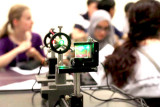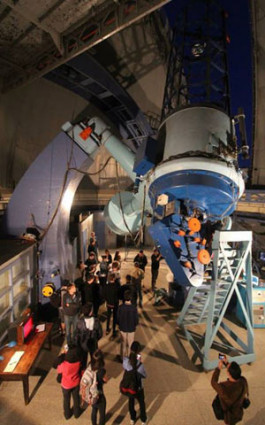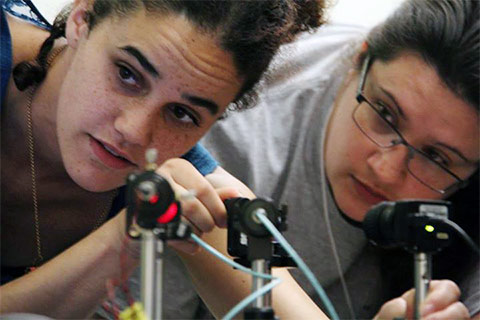They came to U of T’s Dunlap Institute for Astronomy & Astrophysics from as far away as Australia and China – the more than 40 students who participated in this year’s summer school, Introduction to Astronomical Instrumentation: First Light on the Decade’s Most Innovative Instruments.
“Our summer school satisfies a need in the astronomical community,” says Prof. Michael Reid, the director of education and public outreach at the Institute and one of the organizers of the weeklong program. “Most astronomy students learn a lot about physics and astronomy, but very little about the machines used to make all these great discoveries about the cosmos – they don’t learn how to build a telescope, or the skills that go into building one.” And without that knowledge, they can’t become the innovators of tomorrow, building the next generation of world-class telescopes.

“I learned a lot,” says Scott Macdonald, an undergraduate student going into his fourth year at Queen’s University in Kingston, Ont., where he specializes in astrophysics. “In one of the labs, we were designing a telescope on a computer – I didn’t even know you could do that!”
Each day is broken in half: lectures from leading scientists in the morning, hands-on lab exercises in the afternoon. Working in teams with experienced astronomers, students learn how to go from an idea to, say, a six-billion-dollar space telescope.
In one of the labs, students worked at stations with lenses, mirrors, lasers and beamsplitters (a type of prism) to set up and align a Michelson interferometer.
Confused? The kids weren’t. With instructions (“keep tissue paper on mirrors to avoid scratching surfaces”, “do not look directly at the laser!”) and lots of discussion, the students happily conducted experiments to determine wavelengths and see fringes (patterns given off when light is reflected).
“Most programs offer lots of training in theory, but here, it’s a good opportunity to get into a lab and start building the instruments,” says Keith Vanderlinde, an instructor at the institute. “We invite 10 instructors, leaders in the field of astronomical instrumentation, and they are happy to take part because they recognize that fact that there is a hole to be filled.”

Now in its third year, the course is open to students in the early years of a graduate program and students who have completed at least three years in an undergraduate program with a background in astronomy, physics or engineering. “The lectures are interesting, but I really enjoyed the practical working labs,” says Flavia Carolina Santos do Amaral, who holds a degree in physics. Here on an exchange program from Brazil, she is happily working on an astrophysics internship until the end of the year.
One of the biggest highlights for students are the professional development sessions, including a mentoring lunch for women, where the instructors are available to discuss pursuing a career in astronomy or astronomical instrumentation.
“Women are woefully underrepresented in astronomy,” says Reid. “The goal of the mentorship lunch is to give young women just starting in astronomy a chance to talk to and network with more experienced female astronomers to learn about the challenges they might face and the strategies they can use to overcome them.” In the past, students have commented that some of their favourite times are these lunches, says Vanderlinde. “Students get a chance to talk to these high-profile instructors over pizza – it’s perfect,” he says.





